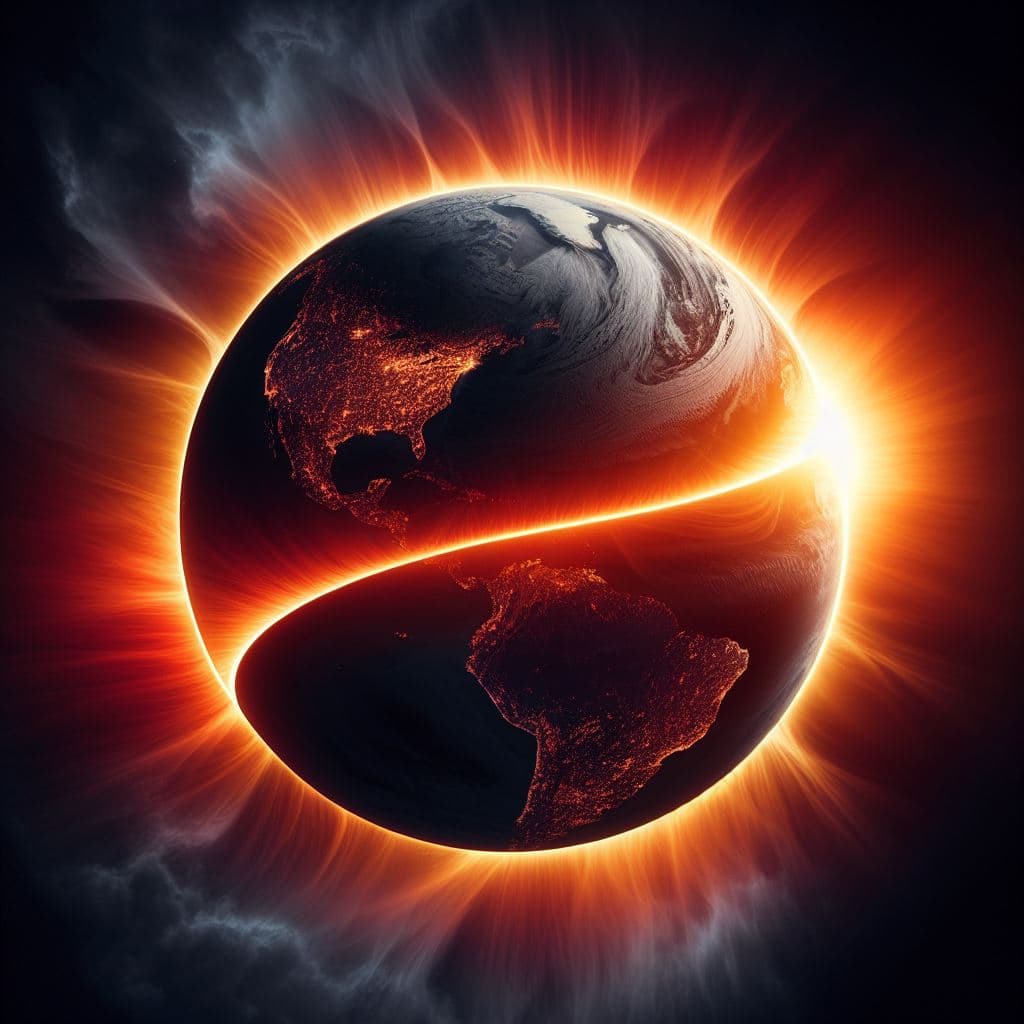Path Across the Americas
The upcoming annular solar eclipse, slated for October 14, 2023, is more than just a celestial event—it's a sky spectacle waiting to unfold. The eclipse, also known as the "Ring of Fire," will trace a path across the Americas, cutting through North, Central, and South America. As the Moon slides between the Earth and the Sun, it will cover the Sun's center while leaving its outer edges visible, creating a brilliant 'ring of fire' effect in the sky.
The phenomenon will be visible across a narrow path stretching from the United States through Mexico, Central America, Colombia, and down to Brazil. It's not just the countries along the eclipse path that will get a glimpse of this cosmic event. Partial views of the eclipse will extend to other regions including West Africa, the Pacific, the Atlantic, and even the Arctic.
Visibility
The 'ring of fire' will be most visible along a narrow strip crossing the USA, Mexico, Central America, Colombia, and Brazil, providing a dramatic celestial display for people in these regions. The cities of Eugene and Odessa in the USA, and Chetumal in Mexico, are among the prime spots for viewing the annular eclipse in its full glory.
However, the spectacle doesn't stop there. The partial eclipse views will extend far beyond, reaching West Africa, the Pacific, the Atlantic, and the Arctic. Although the 'ring of fire' effect will not be visible in these areas, the partial eclipse will still present a stunning sight for skywatchers.
Observational Technology
Advancements in technology have significantly enhanced the eclipse-viewing experience. NASA's Eclipse Explorer, an interactive map, is designed to augment eclipse-viewing experiences by providing precise information on the best viewing locations and times. The technological leap doesn't end with interactive maps. Live streams and broadcast events, like the one planned from Roswell, New Mexico, will allow individuals worldwide to partake in the event remotely, bringing the grand spectacle to screens around the globe.
Animation and Visualization
A flyover video animation chasing the 'Ring of Fire' eclipse from 125 miles high at speeds ranging from 7,000 mph to 1,700 mph showcases the Moon's shadow racing from Oregon to Texas. This animation not only provides a unique perspective but also accentuates the grandeur and the rapid pace at which celestial events unfold.
The "Ring of Fire" eclipse is a testament to the growing public engagement with celestial phenomena, spurred by human curiosity and the advancing capabilities of observational technology. The blend of scientific inquiry and communal experience surrounding this event underscores the collective human endeavor to witness and understand the grandeur of cosmic events.
